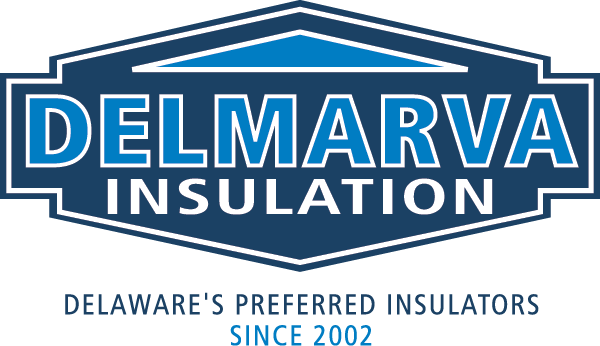Insulation is a vital part of any home, acting as a barrier that slows the transfer of heat. It helps maintain stable indoor temperatures, making a home more comfortable while improving energy efficiency. By reducing heat loss in the winter and minimizing how much heat moves into a home during the summer, insulation significantly reduces heating and cooling costs while keeping walls and floors warmer in the winter and cooler in summer.
Here in Delaware, homeowners and builders should pay close attention to home insulation thanks to our state’s continental climate with cold winters and hot, humid summers. Ensuring your home or building project has proper insulation installation not only improves residents’ comfort but also helps meet our state’s energy efficiency requirements and building codes.
 Understanding How Insulation Works
Understanding How Insulation Works
To understand how insulation works, it’s important to know how heat energy moves through a home. Heat moves in three ways:
- Conduction– When heat travels through solid materials like walls or floors.
- Convection– When heat transfers through the movement of liquids and gases like air, creating convective heat.
- Radiation– When heat moves directly from the source to people and objects in the form of infrared energy.
Thermal insulation materials are designed to slow these processes and reduce the amount of heat flow. They resist conductive heat flow, trap air space to minimize convective heat loss, and sometimes include reflective surfaces to block radiant heat.
Insulation is rated by its R-value, which measures insulation’s resistance to heat flow—the higher the R-value, the better the insulation. Different parts of a Delaware home require different R-values, with attics needing higher values than walls or basements.
Types of Insulation for Delaware Homes
There are many effective types of insulation you can choose to install in your home or building project. Here’s a look at some popular choices:
Spray Foam Insulation
Spray foam expands upon application, sealing gaps and providing a higher R-value per inch than most insulation materials. It acts as both thermal insulation and an air barrier, making it ideal for attics, crawl spaces, and irregular areas. While more expensive and requiring professional installation, its superior performance makes it a popular choice among homeowners and builders.
Fiberglass Insulation
One of the most common insulation materials, fiberglass insulation comes in batts or loose fill form. It is made of tiny glass fibers and is a cost-effective and widely used insulation for walls, attics, and floors. However, it must be properly installed, without gaps or compression, to deliver full efficiency and R-value.
Wall Insulation
Walls without proper home insulation can lead to major heat loss and reduce a home’s energy efficiency thanks to gaps, compression, and thermal bridging. Using blown-in or loose fill insulation to completely fill wall cavities prevents drafts and enhances energy efficiency.
Foam Board Insulation
Foam board insulation, usually made of polystyrene or polyisocyanurate, offers high R-values for its thickness and is commonly used in new construction or renovations. It provides continuous thermal insulation, reducing heat loss through studs and framing.
Mineral Wool Insulation
Known for its fire resistance and soundproofing benefits, mineral wool withstands high temperatures and reduces noise transmission, making it a great choice for walls and ceilings.
 Benefits of Proper Insulation in Delaware
Benefits of Proper Insulation in Delaware
Our Delaware climate makes insulation crucial year-round—keeping warm air inside during winter and blocking heat from entering in summer.
With insulation comes many fantastic benefits that homeowners can enjoy all year long, such as:
Lower Utility Bills
Homeowners should expect to save an estimated 15% on their heating and cooling costs with proper insulation and air sealing.
Added Comfort
A well-insulated home feels less drafty and has more even indoor temperatures.
Less Stress on the HVAC System
The HVAC system doesn’t need to work as hard to keep a home comfortable thanks to insulation.
Delaware’s Building Codes & Insulation Incentives
Delaware has adopted modern energy codes requiring specific R-values for different parts of a new or existing home, such as R-49 for ceilings and R-20 for above-grade exterior walls. These standards ensure homes are energy-efficient and cost-effective in the long run.
Homeowners and builders can also take advantage of incentives, including rebates from Energize Delaware’s Home Performance with ENERGY STAR program and federal tax credits for insulation improvements. These programs make upgrading insulation more affordable and beneficial.
Why Choose Delmarva Insulation?
Investing in quality insulation enhances comfort, lowers energy costs, and even boosts property value over time. Proper insulation installation is key to achieving these benefits, which is why it’s wisest to work with experienced professionals.
Delmarva Insulation is a trusted expert in the Delmarva region, specializing in insulation solutions tailored to our climate and building codes. Our expert team ensures your insulation is installed correctly the first time to guarantee your home or building project is energy efficient, comfortable, and well-protected.
Contact us today to learn more about how proper home insulation can improve your home or building project’s energy efficiency and save you money for years to come.
References
Delaware Climate Office. “Delaware’s Climate.” University of Delaware, climate.udel.edu/delawares-climate/.
Delaware Department of Natural Resources and Environmental Control. “Home Energy Rebate Programs.” DNREC, 2024, dnrec.delaware.gov/climate-coastal-energy/energy-office/ira/home-energy-rebates/.
Energy Star. “Methodology for Estimated Energy Savings.” Energy Star, n.d., www.energystar.gov/saveathome/seal_insulate/methodology.
European Insulation Manufacturers Association (Eurima). “Benefits of Mineral Wool Insulation.” Eurima, 2025, www.eurima.org/benefits-of-mineral-wool-insulation.
Insulation Institute. Delaware State Building Code – Energy Efficiency Requirements (2018 IECC). Aug. 2020, insulationinstitute.org/wp-content/uploads/2020/08/DE_Code-FINAL.pdf.
North American Insulation Manufacturers Association. “Residential Insulation & Home Builders’ Resource.” Insulation Institute, 2025, insulationinstitute.org/im-a-building-or-facility-professional/residential/.
U.S. Department of Energy. “Types of Insulation.” Energy Saver, energy.gov/energysaver/types-insulation.
U.S. Environmental Protection Agency. Insulation Fact Sheet. 2008. Energy Star, https://www.energystar.gov/sites/default/files/asset/document/Insulation%20Fact%20Sheet.pdf.

 Understanding How Insulation Works
Understanding How Insulation Works Benefits of Proper Insulation in Delaware
Benefits of Proper Insulation in Delaware
